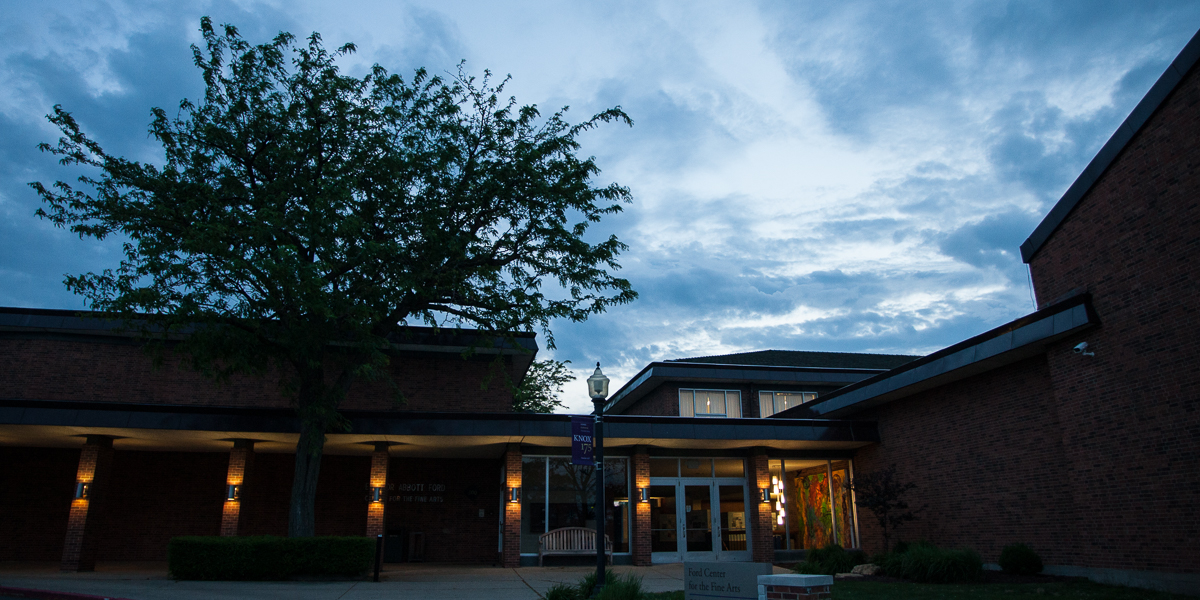Knox Stories
Repertory Theatre Term Performs 20th Season
The 2025 season marked the 20th Repertory Theatre Term season at Knox College
Venture Boldly

Office of Communications
2 East South Street
Galesburg, IL 61401


The wettest weather in years has proven to be the right time for Knox College to expand its use of rain gardens to control water runoff from buildings and paved areas.
Knox students, faculty and staff spent an afternoon this past spring term, installing the newest campus rain garden, where all that water can do some good.
A dozen students, working with Associate Professor William Hope, completed the planting of a rain garden outside the new HOPE Center. No relation to Professor Hope, the HOPE Center is a renovated former church that was purchased by Knox and now houses the offices of Spiritual Life and Intercultural Life.
Many of the students had completed an anthropology-sociology course with Hope, “Examining the Anthropocene.” The course looks at the impact of human-generated transformations of ecological, geological, and biological processes at global proportions.
"In the class, we've analyzed how we can live with the environment, and a rain garden is the perfect way to do that," said environmental studies major Soleil Smith '20. "It's working with water, realizing that we have our own infrastructures, and learning how we can work with water instead of against it."
This isn't Knox's first rain garden. Professor Hope and students in the course designed and planted a rain garden outside Knox’s Seymour Library in 2016. Knox’s Whitcomb Art Center, which opened in 2017, received LEED Gold certification for sustainability-related features that include two rain gardens.
"The reason we get water in places we don't want, is we've [put ourselves in places] where we don't want water to be.” Smith said. “Water is going to do what it wants to do, to get where it's going. [Rain gardens are] a much better way of working with it."
"I was interested in being involved with environmentalism in a very tangible way," said another student in the course, Veronica Sefic '21. "Being able to interact with the earth and the way that we affect it, the way that we inhibit the growth of new life, learning how to integrate it into the infrastructure that we already have—all that is very appealing to me."
So far, 2019 has been one of the wettest on record in the Midwest, with more than 13 inches of rain in the first few days of June. On April 29, the Knox campus, along with much of the region between the Illinois and Mississippi rivers, received more than 2 inches of rain in a day.
According to Hope, the rain garden was designed to handle that much, and more—“The goal is to ‘slow it, spread it, sink it,'” Hope said. “Basically, for each inch of rain, we anticipate around 1,100 gallons of runoff water from the building to make its way into the installation, which if completely full would have capacity for around 6,000 gallons. The basin of the rain garden can accommodate a 3-inch rain without dumping any water directly into the local stormwater system."
Preliminary earthwork was completed by staff from the Knox College Facilities Services Office. Hope coordinated the plantings, with landscape design by Sustainability Coordinator Deborah Steinberg.
"The students, faculty, and staff who worked on this project are also contributing to the biodiversity of the campus," Hope said.
"The plants selected are largely native species that are drought-resistant and water-tolerant, relatively low maintenance," Hope said. "Once the garden is fully established, the flowers will look great and several provide nectaries and pollen for beneficial insects."



Published on July 25, 2019
Peter Bailley '74
 "I was interested in being involved with environmentalism in a very tangible way." -- Veronica Sefic '21
"I was interested in being involved with environmentalism in a very tangible way." -- Veronica Sefic '21